sidney gardens
sidney gardens
Commemorating Queen Victoria's Diamond Jubilee
Sidney Gardens, a three acre triangle of open space in Ram Park, was presented to the town by Alderman Sidney Watts when he was mayor to commemorate the 1897 diamond jubilee of Queen Victoria, although the gardens were not officially opened until 23 June the following year. The gardens were created at a cost of £760 and Mr Watts graciously named the gardens after himself (the spelling 'Sydney' on one of the signs is incorrect and presumably due to the incompetence of somebody in the council's Parks Department for not checking). However as he was away representing Yeovil at the jubilee celebrations in London, the ceremony was carried out by his two daughters Ada and Mildred. It was estimated that over 5,000 people witnessed the ceremony as Ada handed the deeds of the land to deputy mayor, William Cox. The Western Gazette reported that she then planted a memorial tree declaring it to be "well and truly planted in Sidney Gardens and hope it will grow and flourish and thus hand down to future generations the story of the ever-to-be-reminded 22nd day of June 1897, God Save the Queen".
|
From the
diary of
Louisa
Harris .... "25 May 1899: Today a fountain (the gift of Mr Farley) is being opened in the Sidney Gardens and the occasion is being made a celebration of the Queen's 80th birthday, so Yeovil is en fete again. Emmie [her sister] and I went up and witnessed the ceremony."
|
James Bazeley Petter presented the bandstand to the town on the occasion of the opening of Sidney Gardens in June 1898. Built of wood, it was vandalised and burnt down during the night of 29-30 May 1972. As a sidenote, my first job when I joined the Borough Architect's department in 1973 was to design a replacement bandstand in reinforced concrete so that it could not be destroyed again. Fortunately it was never built - Yeovil had far too much 1970's concrete already.
The fountain, which hasn't seen water for many years, was presented to the town by John Farley on 24 May 1899 to commemorate Queen Victoria's 80th birthday. It was restored in 1991 but when civic chiefs and private sponsors gathered for the official switching on ceremony it was discovered that a pump had been stolen and the stem damaged. It has been dry ever since. As mayor John Cruddas said at the time "We can put men on the moon, but in Yeovil it seems we can't get water up a spout!"
A sundial on a stone plinth was installed in the gardens in November 1912 commemorating the gift of the gardens to the town by Sidney Watts. It was almost immediately vandalised and thereafter surrounded by protective railings and a reward of £1 offered for information leading to the arrest of the vandals. The railings were removed for the war effort in 1941 but the sundial and plinth were removed from the gardens in the mid-1990s.
The Somerset Fire Brigade constructed ‘emergency water supplies’ during the Second World War to supply water to their fire engines. There was a particular problem with water supply because the water mains may suffer damage during bombing. Consequently an 11,500 gallon circular emergency water tank, 7m in diameter was located on the east side of The Park, in the northwest corner of Sidney Gardens.
Today the trees have grown and the gardens are a very pleasant, relaxing haven just a short walk from the town centre.
As a sidenote - if anyone knows why the spelling 'Sydney' is sometimes used for Sidney Gardens (other than the obvious poor spelling on someone's part), please contact me.
|
Yeovilians
remember... |
gallery

Courtesy of Rob
Baker
The original 1897 plan of Sidney Gardens, with amendments made in 1900.
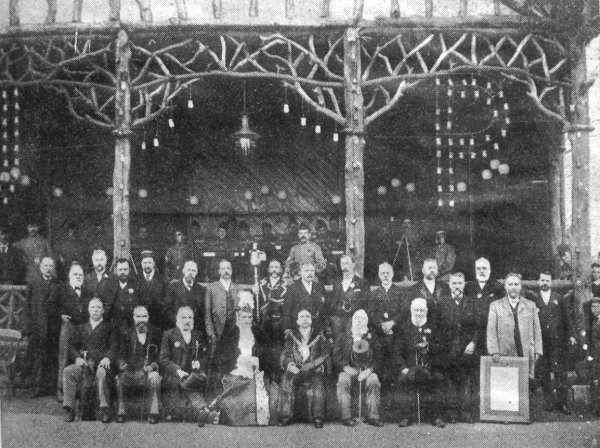
Courtesy of
Olly Ewens
This photograph is from a 1952 newspaper article and was taken on the occasion of the opening of Sidney Gardens in June 1898. The group, photographed with the Mayor, Mr John Vincent, has as its background the thatched bandstand given by Mr James Bazeley Petter to mark the opening. Standing (left to right) are: - E Benson, W Summers, J Kerby Whitby, Mr Brown, William Maynard, GH Gould, Edward Samuel Ewens, Henry Jesty (mace-bearer), William W Johnson, Charles J Hook, John Bazeley Petter (donor), W Armitage (Borough Surveyor), John Howe Farley, Walter J Nosworthy, William Beale Collins, Charles Fox. Sitting - Levi Beer, CW Pittard, Sidney Watts, Mrs Vincent, John Vincent (Mayor), Joseph Chaffey Moore, William Cox.
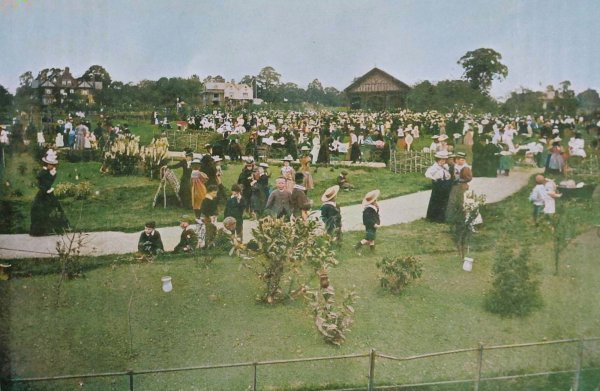
This colourised photograph is, allegedly, crowds attending the official opening of Sidney Gardens on 23 June 1898. However the photograph was taken by Yeovil Photographer Jarratt Beckett and published in his 1897 book "Somerset viewed through a Camera".
|
On the rim of the fountain's pool, in front of the three ladies seated at left in the photograph below, is seen one of three water jets (see them in action in the postcard after next). Unfortunately for the three ladies this jet had been installed the wrong way round - resulting in an early shower for the three ladies when the fountain was ceremoniously turned on. It would appear that the fountain was doomed with problems from day one! |
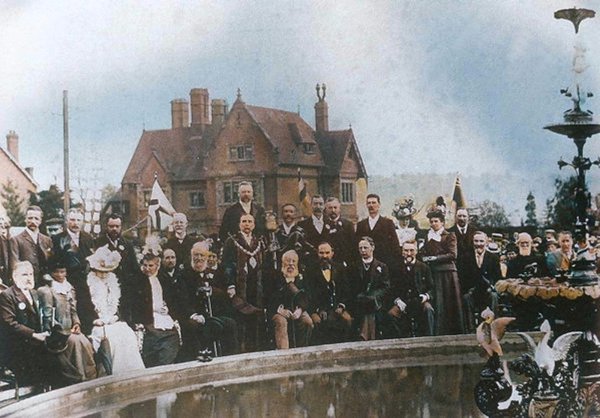
A colourised photograph of the presentation of the Sidney Gardens fountain on 24 May 1899. You'd have thought at least one of 'em could have raised a slight smile.

So, who was who?
Unfortunately
only some of the
gathering are
known, these are
as follows -
1 Cllr GH Gould,
2 Cllr
Edward Samuel
Ewens, 4
Cllr WW Johnson,
5 G Gawler, 6
Cllr
James Bazeley
Petter, 7 WG
Armytage
(Borough
Surveyor),
Henry Jesty
(Mace Bearer), 9
Cllr Charles
Hook, 10 JK
Whitby, 11 Cllr
HF Raymond, 14
William Maynard,
15 Alderman
Sidney Watts,
16 Miss Watts,
17 Miss Vincent,
18 Mrs Vincent,
20 Alderman W
Cox, 22 Mayor
John Vincent,
23 Alderman
Joseph Chaffey
Moore, 24
Cllr
Charles Wreford
Pittard, 25
Henry Butler
Batten (Town
Clerk), 26
John Howe
Farley (who
donated the
fountain), 27
Ebenezer Pittard,
29
William Beale Collins.

The inscription on the rim of the fountain.
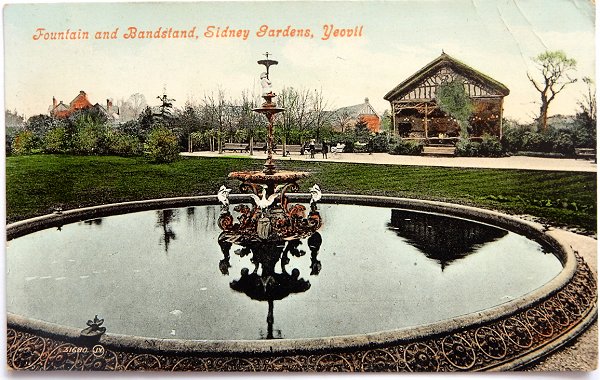
From my
collection.
This
image
features in my
book 'Yeovil
- The Postcard
Collection'.
A hand-coloured postcard sent in 1904, with the fountain full of water - a sight not seen for many years.

From my
collection
Compare the trees either side of the bandstand and, indeed, the prams just visible between the fountain and the bandstand with the previous photograph and the two photographs must have been taken within seconds.
Or were they? If the fountain has just been switched on, how come there are no ripples on the surface of the water? Early Photoshop methinks? This example was posted in 1908.

A postcard of the Sidney gardens fountain posted in 1906.

From the Stiby
Collection
(colourised),
Courtesy of South Somerset Heritage Collection
This is one of the first photographs of Sidney Gardens. It was taken by Henry Stiby from his bedroom window around 1900.
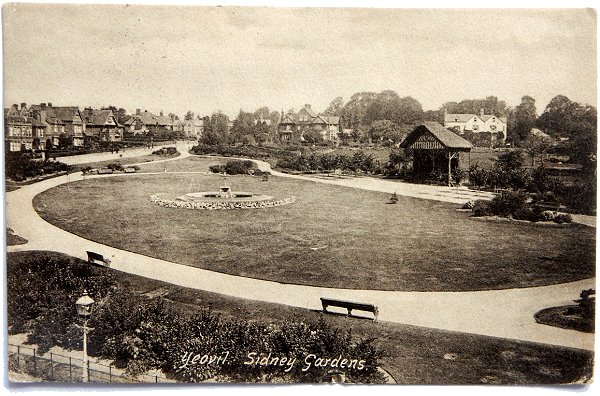
From my
collection.
This
image
features in my
book 'Yeovil
- The Postcard
Collection'.
One of the first, if not the first, postcard featuring Sidney Gardens. This, and another example in my collection using the same photograph, were both posted in 1902.
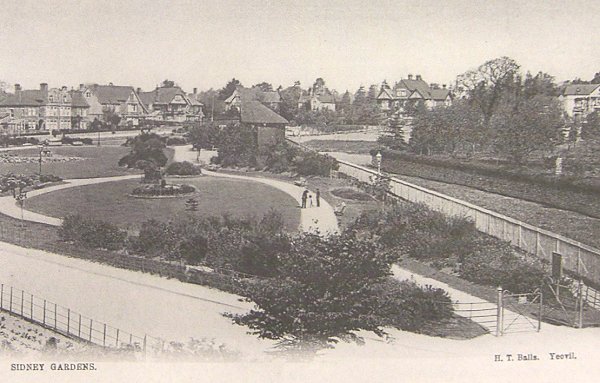
From my
collection
A postcard of 1905 published by Henry Thomas Balls of Yeovil. This image was used on postcards into the 1920s.
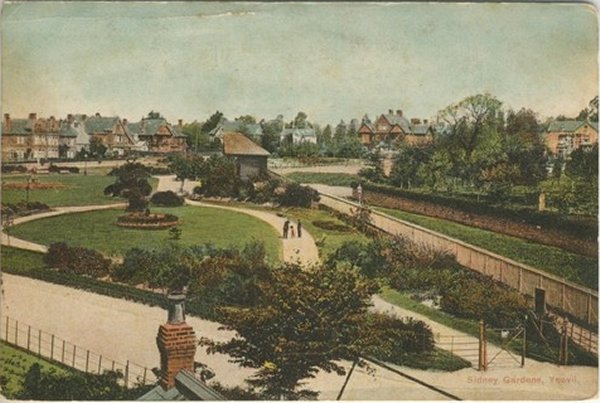
From my
collection
Another postcard, using the same image as above and again posted in 1905, but hand-coloured and the chimney at bottom hasn't been air-brushed out.
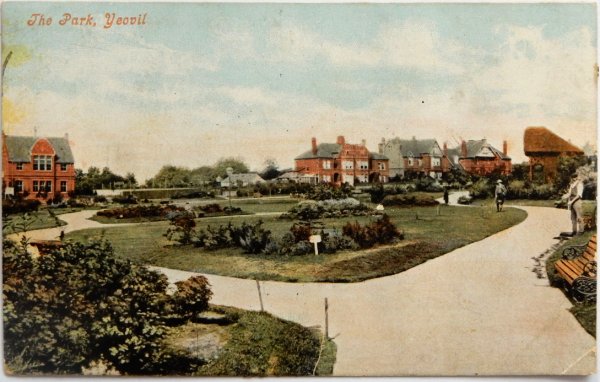
From my
collection
A hand-coloured postcard sent in 1906, although the photograph was clearly taken several years earlier - noted by the lack of trees either side of the bandstand (see following card). I have an identical card posted in 1912.
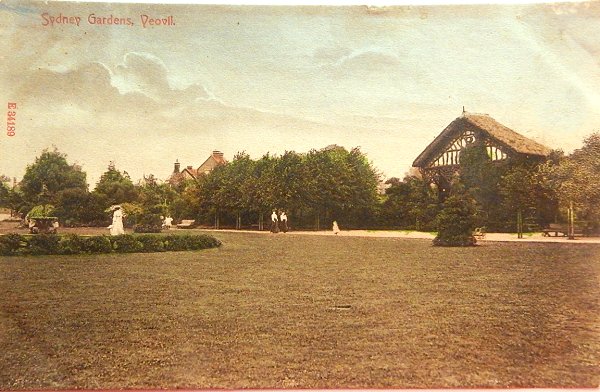
From my
collection
This postcard, also posted in 1906, again shows both the bandstand and the fountain. By this time the closely-planted groups of trees planted either side of the bandstand, planted to provide shade on hot, sunny days, have grown considerably.

From my
collection.
This photograph
features in my
book "A-Z
of Yeovil"
A postcard, posted in 1907, showing both the bandstand and the fountain.

From my
collection.
This
image
features in my
book 'Yeovil
- The Postcard
Collection'.
A hand coloured and greatly touched-up postcard (including a huge amount of water issuing from the fountain), posted in 1908.

Courtesy of
South Somerset
Heritage
Collection
This ceramic plaque celebrating Sidney Gardens features a copy of the postcard in the previous image, from about 1908, mounted in the centre. The plaque is held at the Community Heritage Access Centre, Yeovil.
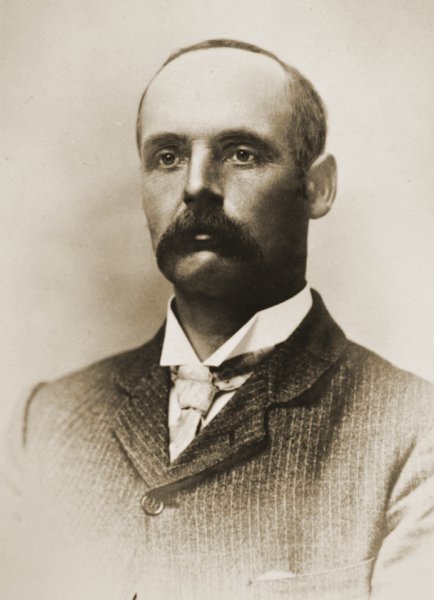
Courtesy of
Vivien and John
Cornelius
Albion James Cornelius (1860-1933), the first Caretaker / Head Gardener of Sidney Gardens and therefore responsible for much of the layout, planting and maintenance of the gardens. Albion was employed as the park's Caretaker from the start and was let go at the age of 70 with a pension. From the minutes of the Town Council it sounds as if he became a valued employee even though they did not like the mode in which he asked for an earlier pay rise! He died three years later in March 1933. Sadly his son, Frederick, died in December that same year knocked down on Mudford Road near the Hollands Inn by a motorcyclist.
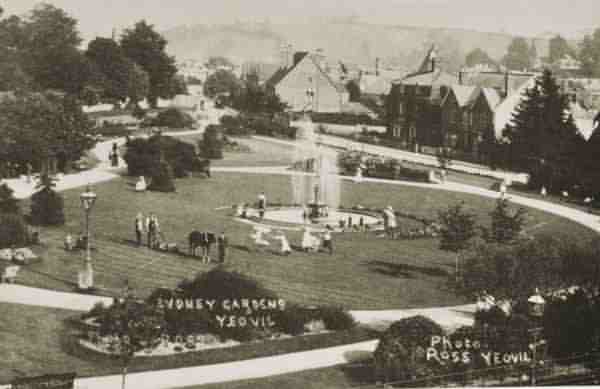
Courtesy of
Vivien and John
Cornelius
A 1908 photograph by Yeovil photographer William Ross, showing the grass being cut by a horse-drawn lawnmower. John Cornelius thinks that the man wearing a hat and standing next to the man mowing the lawns was his great-grandfather, Albion Cornelius (previous photograph).
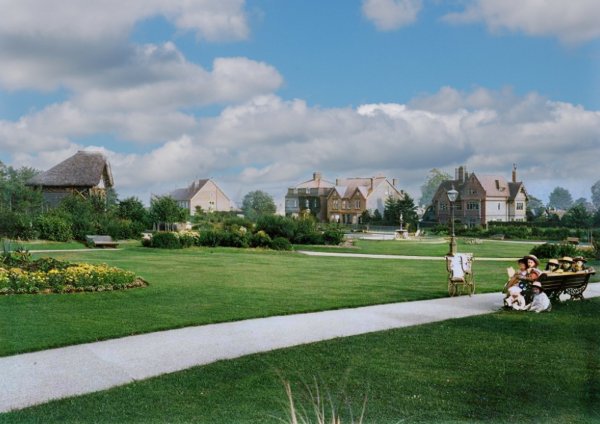
From the Stiby
Collection
(colourised),
Courtesy of South Somerset Heritage Collection
A photograph of Sidney Gardens by Henry Stiby. published in 1906. The bandstand is at far left and the fountain is seen just left of the lamp post.

From my
collection
An enlargement of part of the previous photograph showing the fountain (not working) and the young Yeovilians enjoying a day in the gardens.

From my
collection
Although posted in 1910, the photograph of this postcard dates back to at least 1906.
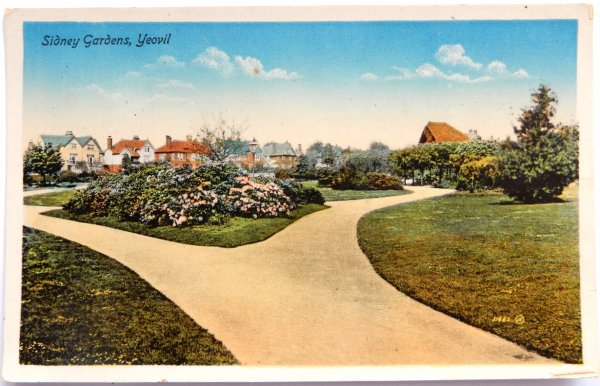
From my
collection.
This
image
features in my
book 'Yeovil
- The Postcard
Collection'.
This postcard was sent in 1916 and the trees are beginning to gain height.

From my
collection
A postcard of the bandstand and fountain, dated 1917.

This colourised postcard dates to about 1920 and features the fountain and the timber bandstand donated by James Bazeley Petter and burnt down in 1972.
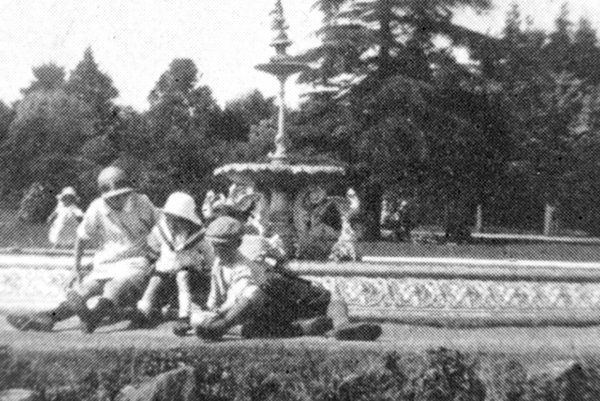
From my
collection
Enjoying a day out in Sidney Gardens during the 1920s.

An aerial view of Sidney Gardens, taken in 1928. Preston Road runs along the top of the photograph while houses in L-shaped The Park are at left and bottom right.

From my
collection
A walk in the park, 1931.
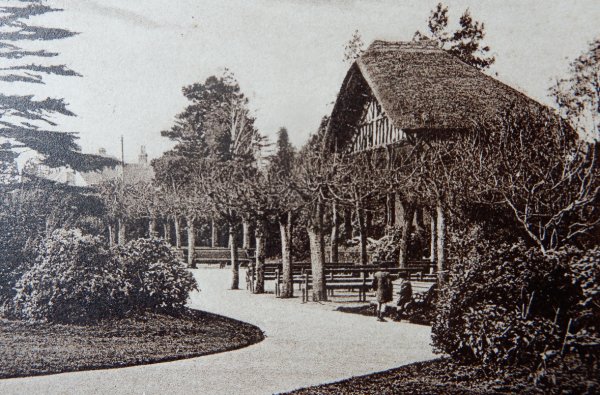
From my
collection
An enlargement from a postcard of the 1940s showing the seats that were installed either side of the bandstand and the trees that had been planted in the very early days of the park to provide shade for those enjoying the bands.
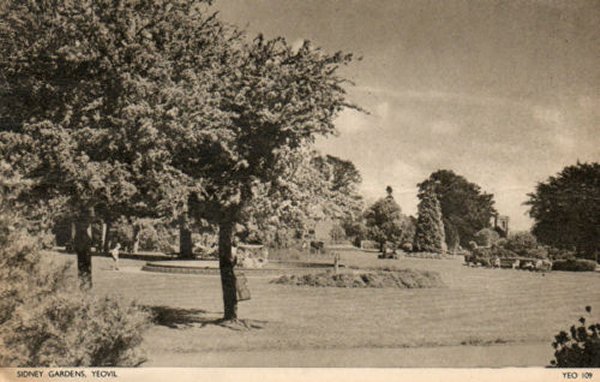
A postcard of Sidney Gardens dating to about 1945.

From my
collection
Relaxing in the park, in a colourised postcard of circa 1952. Note that someone has nicked the cherub off the fountain!
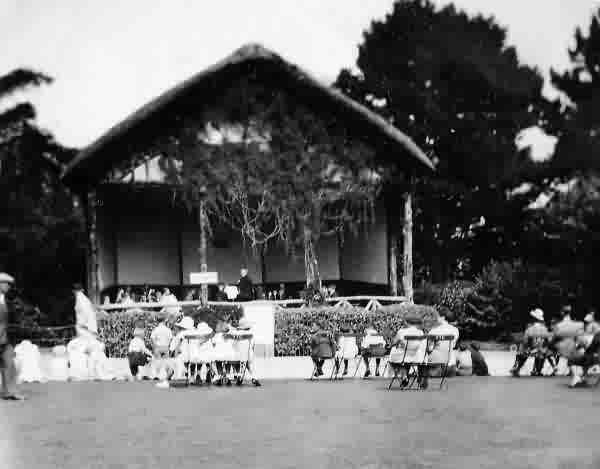
Courtesy of
David Collard
A band playing in the bandstand - I'm guessing late 1960s as much of the front of the bandstand appears to be falling away.
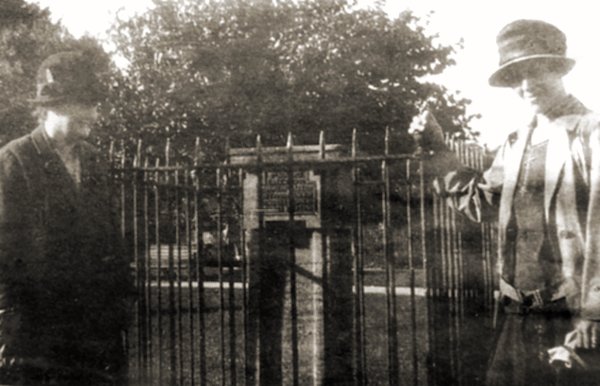
The Sidney Gardens' sundial protected by iron railings that were erected after the sundial was vandalised (the railings were removed for the war effort in 1941). Photographed in the 1920s.
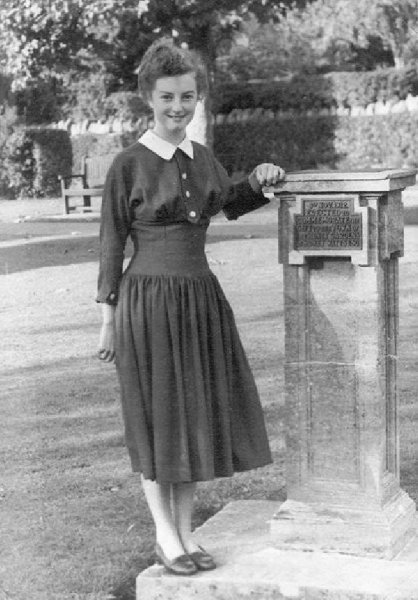
Courtesy of
George Stevenson
This photograph (I'm guessing from the 1950s) shows a sundial that originally graced Sidney Gardens - its plaque is shown below. I wonder whatever happened to it?

Courtesy of
George Stevenson
The plaque of the sundial photographed above reads "6th Nov 1912. Erected to Commemorate the Gist to the Town of the Sidney Gardens of Sidney Watts Esq".

Courtesy of
George Stevenson
The font was taken from Christ Church and placed in Sidney Gardens. In this photograph (I'm guessing from the 1950s) the font stands on its original full-height plinth.

Cast iron bollards guarding one of the pedestrian entrances to Sidney Gardens. Probably manufactured at Petter & Edgar's Iron & Brass Foundry. Photographed in the 1970s and removed in the 1980s.
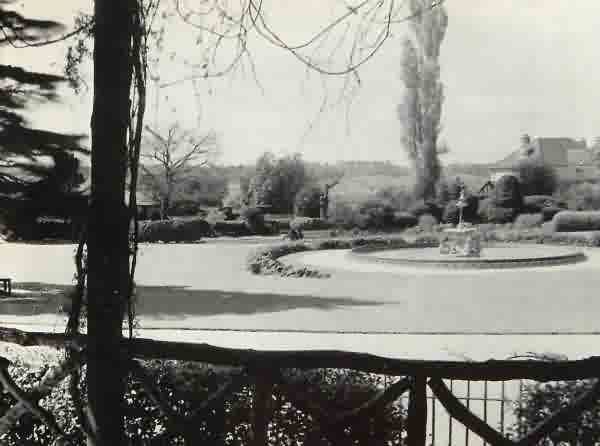
An unusual view of Sidney Gardens photographed from within the bandstand in 1953.

Courtesy of
Betty Barber
(née Bird)
Sidney Gardens - actually with water and a working fountain - photographed in the 1960s.
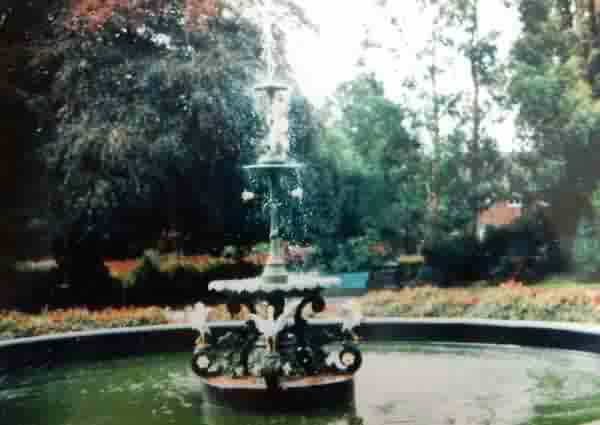
Courtesy of
Betty Barber
(née Bird)
Sidney Gardens fountain in its wider setting. Photographed in the 1960s.

Courtesy of Bill and Audrey Robertson
Park Lodge, facing the Park, was converted into sheltered accommodation in the very early 1980s. Notice in the foreground, sitting in the flowerbed, is the old font from Christ Church on a severely truncated plinth.

The truncated font from Christ Church, now moved to a flower bed close to The Park. Photographed in 2015.

From my
collection
A postcard dated 1962 of Sidney Gardens - showing the fountain again sans cherub.
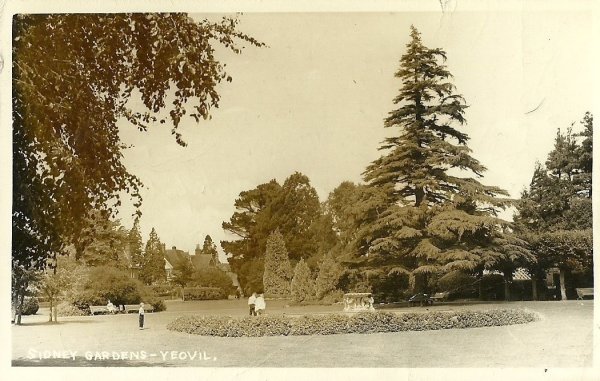
Another postcard of the 1960s.
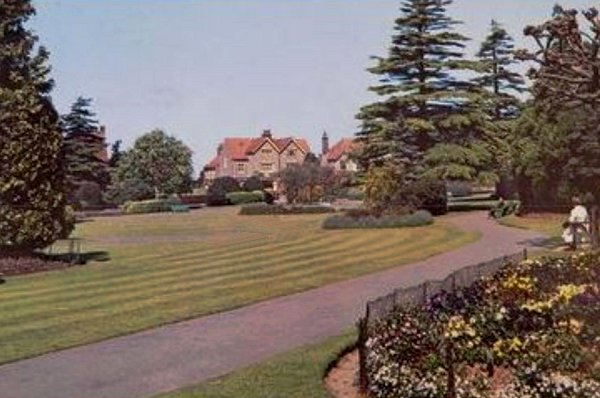
From my
collection.
This
image
features in my
book 'Yeovil
- The Postcard
Collection'.
Sidney Gardens photographed in the mid-1960's.
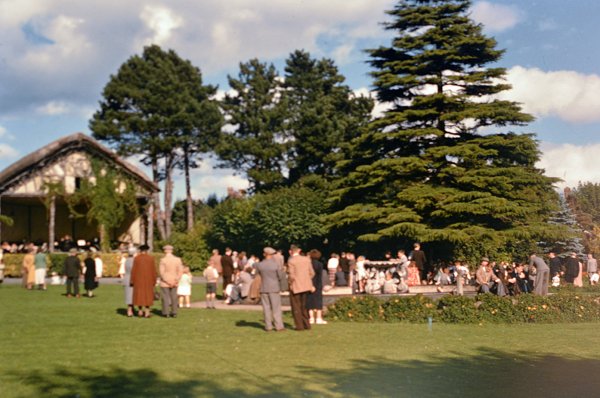
Courtesy of Jack
Sweet.
This photograph
features in my
book 'Now
that's what I
call Yeovil'.
And the band played on.... crowds enjoy the band music in the park during the 1960s.
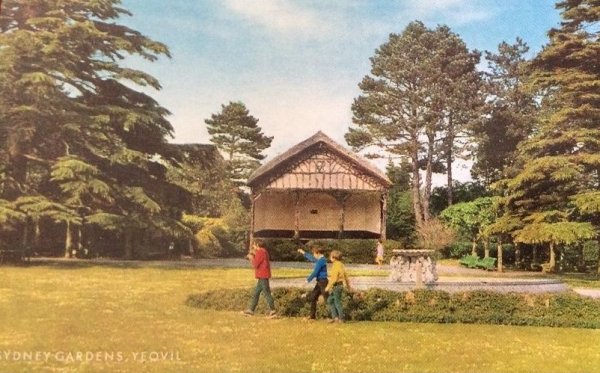
From my
collection
A postcard of Sidney Gardens dating to the late 1960s and featuring the bandstand just before it was vandalised in 1972.
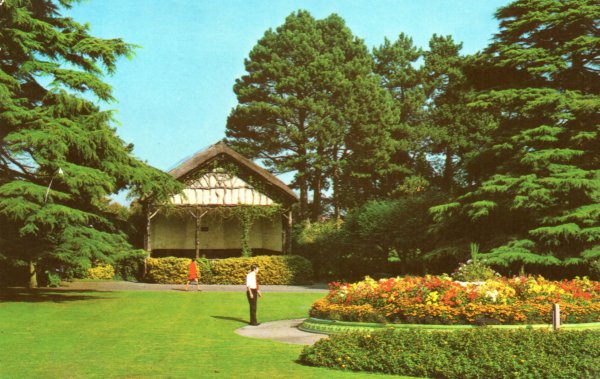
From my
collection.
This
image
features in my
book 'Yeovil
- The Postcard
Collection'.
Probably the last postcard produced of the bandstand, this dates to 1971 - the year before it was destroyed by vandals.
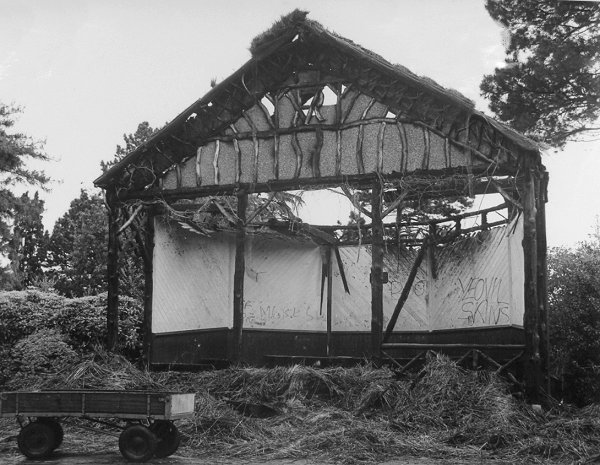
The vandalised bandstand, photographed in 1972.
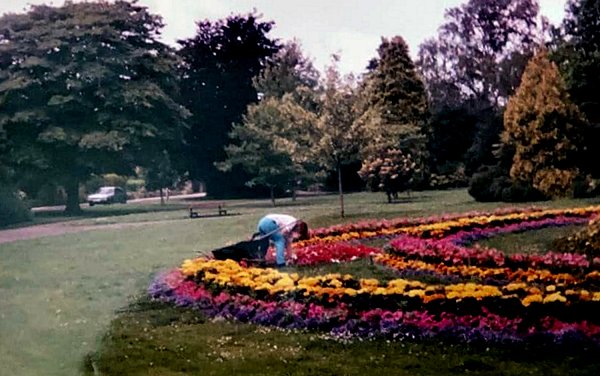
Courtesy of
Rosemary Hodges
Rosemary Hodges tending the flowerbeds around the former fountain in the 1980s.

Today it is evident that the trees have grown well over the last hundred years or so. Photographed in 2013.
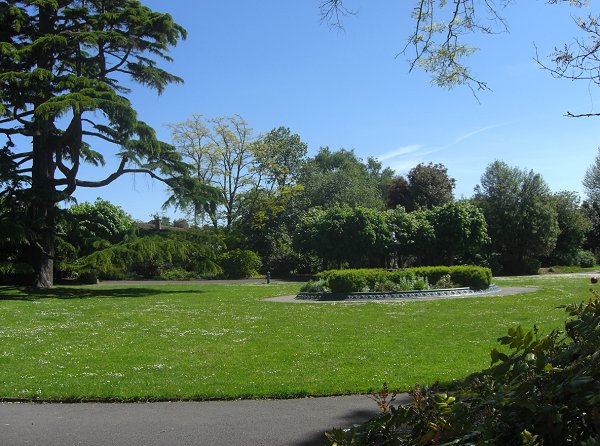
The bandstand was originally left of centre in this photograph. Photographed in 2013.

Sadly, by the time of this September 2023 photograph, the tree had died.
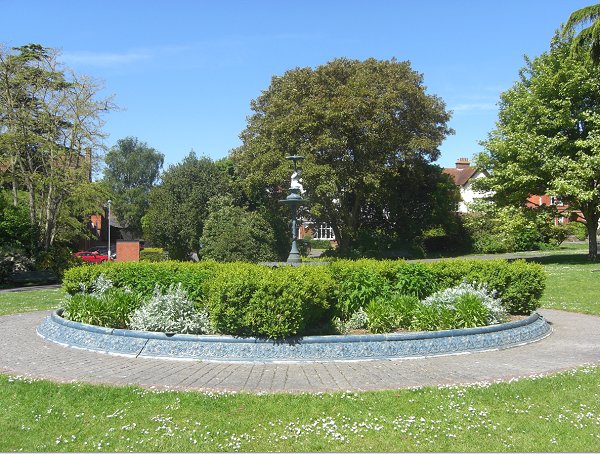
This photograph
features in my
book "A-Z
of Yeovil"
Sadly the fountain hasn't seen water for years - I wonder what John Farley would make of it now? Photographed in 2013.
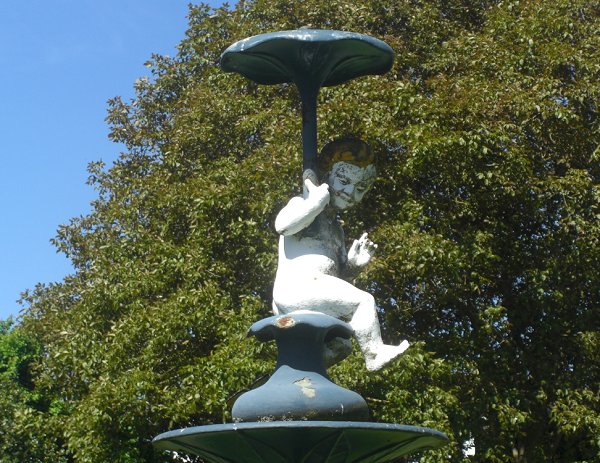
So, where were you in the 1960s? The cherub atop the fountain has seen better days, but at least he's still smiling. Photographed in 2013.
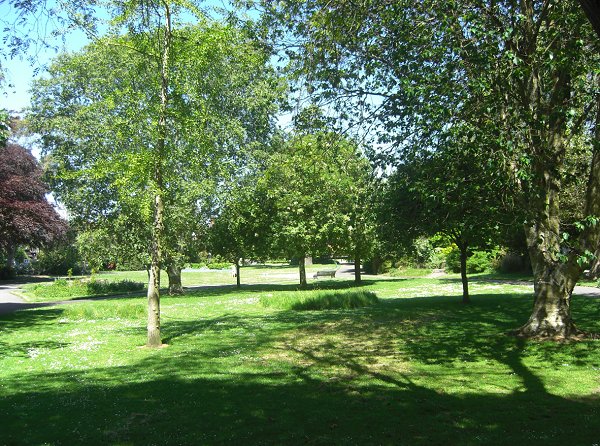
More recent tree planting is now filling the space nicely. Photographed in 2013.